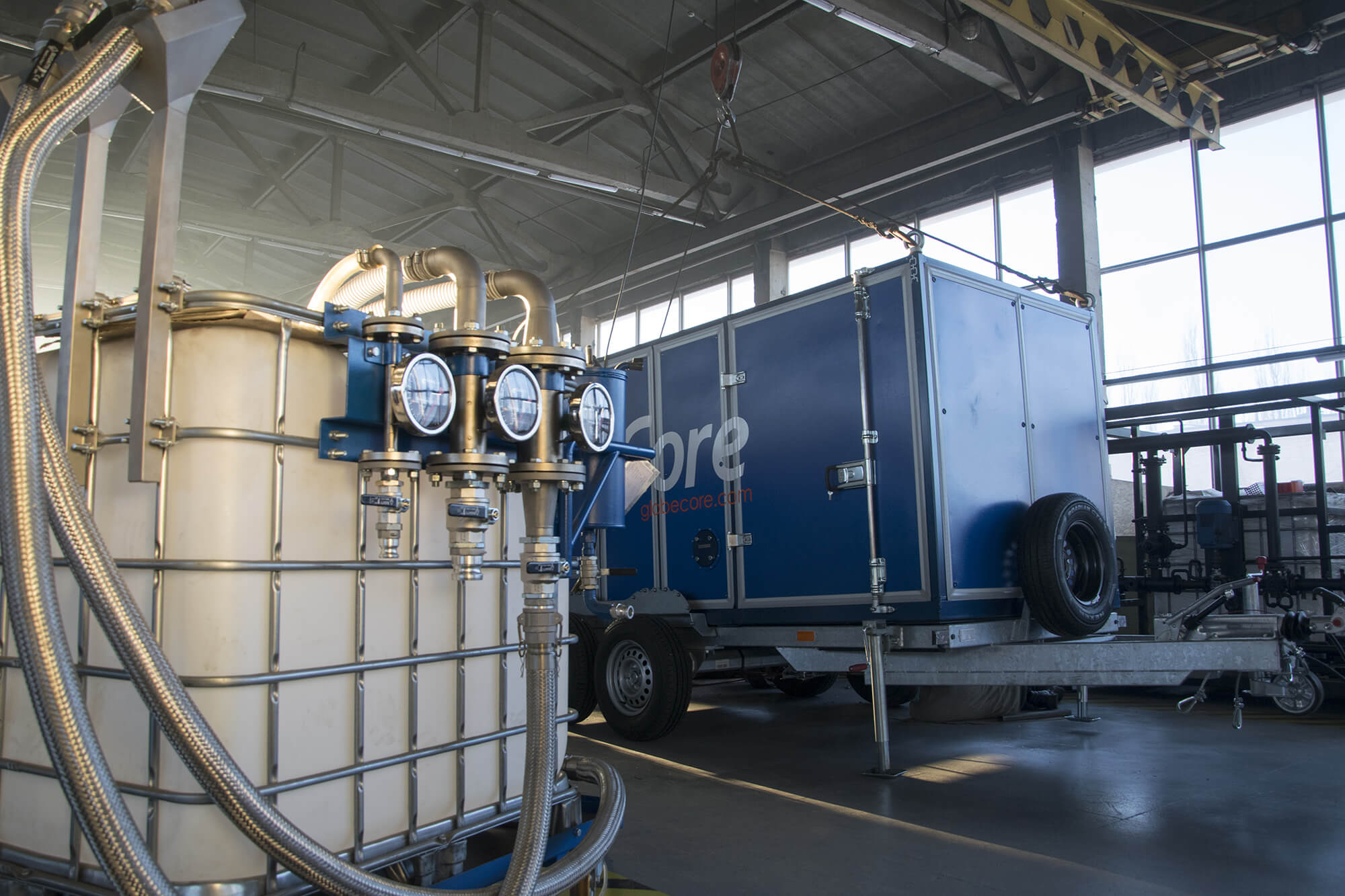Vacuum is understood as a certain area of space with pressure less than that of the ambient atmosphere. There is also the concept of the ideal or absolute vacuum: a space totally devoid of matter. However, achieving this condition is impossible. The former definition is usually used.
The degrees of vacuum
The range of pressures which can be described as ‘vacuum’ is quite high. It is convenient to divide this range into several intervals, with each denoting a certain degree of vacuum. There are low (760-25 mmHg), medium (25-10-3 mmHg), high (10-3-10-9 mmHg) and ultrahigh vacuum degrees (10-9-10-12 mmHg). Each services its purpose. Low vacuum creates a pressure difference which can be used to hold or lift loads, molding, liquid filtration and purification. Ultrahigh vacuum is used to clean various surfaces.
Vacuum technologies in GlobeCore products
Vacuum technologies in GlobeCore equipment are applied in industrial oil purification units, along with other methods, such as heating and filtration. The degree of vacuum required is defined by the type of protection of the oil against the environment.
There are breathing transformers, for instance, where the ‘breathing’ occurs through desiccators filled with silica gel. There are also sealed transformers with ribbed tanks, which prevent contact of the oil with the ambient air entirely.
Low vacuum (760-10 mmHg) is used in the СММ-0.6, СММ-1.0, СММ-2.2 and СММ-4.0 units, which purify and dry transformer oil in breathing transformers. This vacuum is also sufficient for the processing of turbine and industrial oil.
Sealed transformers require thorough degassing of oil before loading the oil into the transformer and evacuation of air from the transformer before filling it with oil. If the oil is not degassed, it can emit solved gases intensively when the transformer cools down, increasing oxidation of the oil and reducing the reliability of transformer bushings. If the transformer is not evacuated before it is filled with oil, not only does the oil oxidate, but the total dielectric strength of transformer insulation is reduced. Both tasks can be solved with the СММ-4/7, СMM-6/7 and СММ-10/1 with high vacuum (10 mmHg-0 mmHg).
Comparison of GlobeCore vacuum unit capabilities
|
Parameter |
Low vacuum units |
High vacuum units |
| Processing capacity, liters/hour |
100-6000 |
100-15000 |
| Nominal filtration fineness, μm |
1 |
1 |
| Moisture content, ppm |
10 |
2 |
| Dielectric strength of the oil after processing, kV |
55 |
65 |
The benefits of the CMM units
- versatility. The CMMs remove gases, moisture and particulate matter from oil and can vacuum fill electrical equipment with oil;
- convenience. The units are designed for maximum flexibility when servicing transformers (on wheels, on trailers etc);
- safety and reliability. All critical process parameters are controlled by sensors. Fault protection systems are in place;
- extra options. The customer can specify a range of extra capabilities: remote process control, capacity adjustment, moisture sensors and particle counters, insulation etc.

